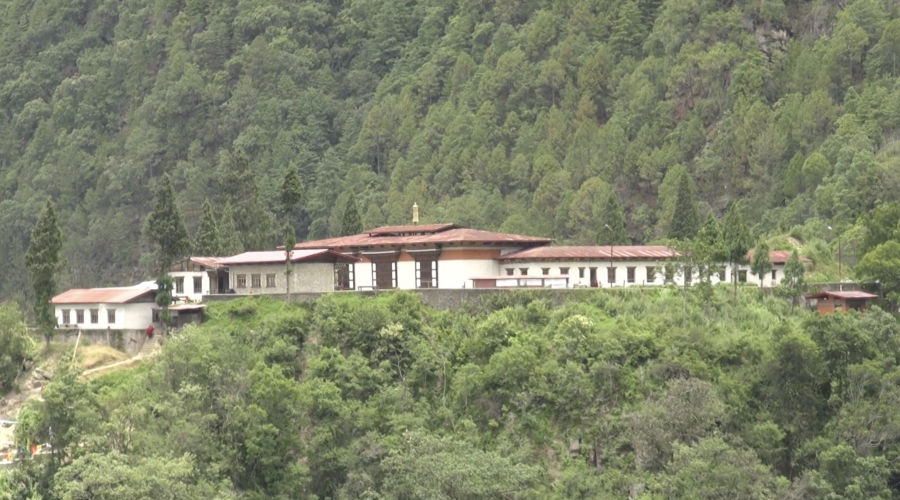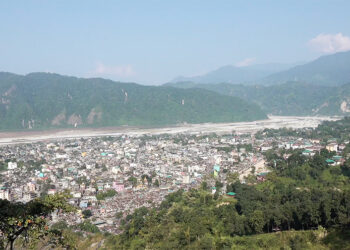 Since the deconstruction of the Dongtir Dzong in Trashi Yangtse in 2023, the Trashi Yangtse Rabdey has been struggling to carry out religious activities. With reconstruction yet to begin, the Rabdey continues to reside and study under challenging and unsafe conditions.
Since the deconstruction of the Dongtir Dzong in Trashi Yangtse in 2023, the Trashi Yangtse Rabdey has been struggling to carry out religious activities. With reconstruction yet to begin, the Rabdey continues to reside and study under challenging and unsafe conditions.
The Dongtir Dzong has been a seat of Trashi Yangtse Rabdey.
The three-storied main structure at Dongtir Dzong was brought down in 2023 after developing multiple structural cracks due to earthquakes.

Today, around 80 monks and teachers live in ageing structures within the dzong premises. With no dedicated classrooms or dormitories, they study, sleep, and pray in the same room. Some lessons are held in a makeshift shed, while others continue in damaged classrooms with visible cracks.
The retaining walls have begun to collapse, posing serious safety risks.
Lam Neten now resides at Trashi Yangtse Dzong, while some teachers stay in Chorten Kora. This separation has disrupted the monastery’s spiritual practices and daily teaching routines.
Trashi Yangtse Rabdey Lam Neten Tshering Dorji said, “When our Lam and Lopen cannot stay together, it hampers the monks’ education. Without a proper Lhakhang or better facilities, it becomes hard to conduct religious activities and retain students. Many leave in search of better conditions.”
“We don’t have proper classrooms. This one room serves as a classroom, sleeping room, and prayer hall. It is not convenient, and the cracks in the walls make it unsafe, but we have no other option,” said Tshering Wangchuk, a lopen with the Trashi Yangtse Rabdey.
According to the Trashi Yangtse District Administration, Dongtir Dzong’s reconstruction has been included in the Department of Culture’s 13th Five-Year Plan activities.
A budget of Nu 104 M has been allocated. Work is set to begin alongside the Trashi Yangtse Dzong extension project. As part of the initial phase, Jangchub Chorten was constructed near the Dzong.
The Dongtir Dzong is believed to have been founded by Gongkhar Gyalpo, the grandson of Lhasey Tsangma, in the 9th century. It is said to have been later reconstructed by Terton Pema Lingpa in the 15th century.
Sonam Dargay, Trashi Yangtse
Edited by Sangay Chezom








